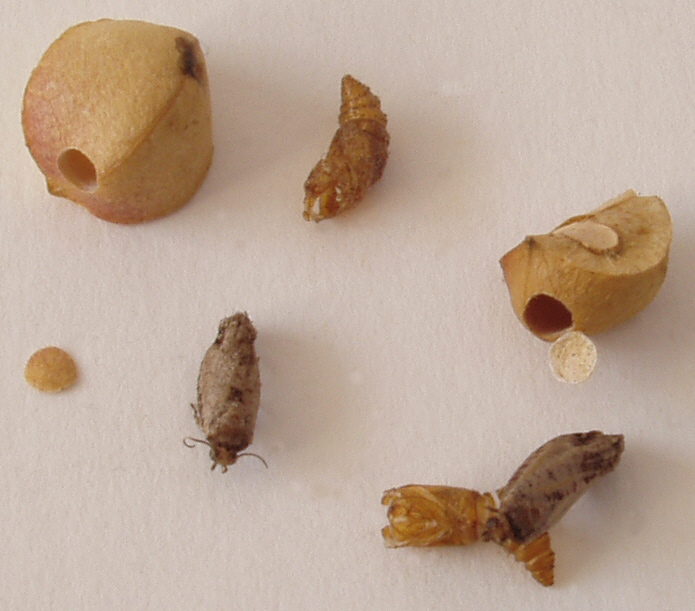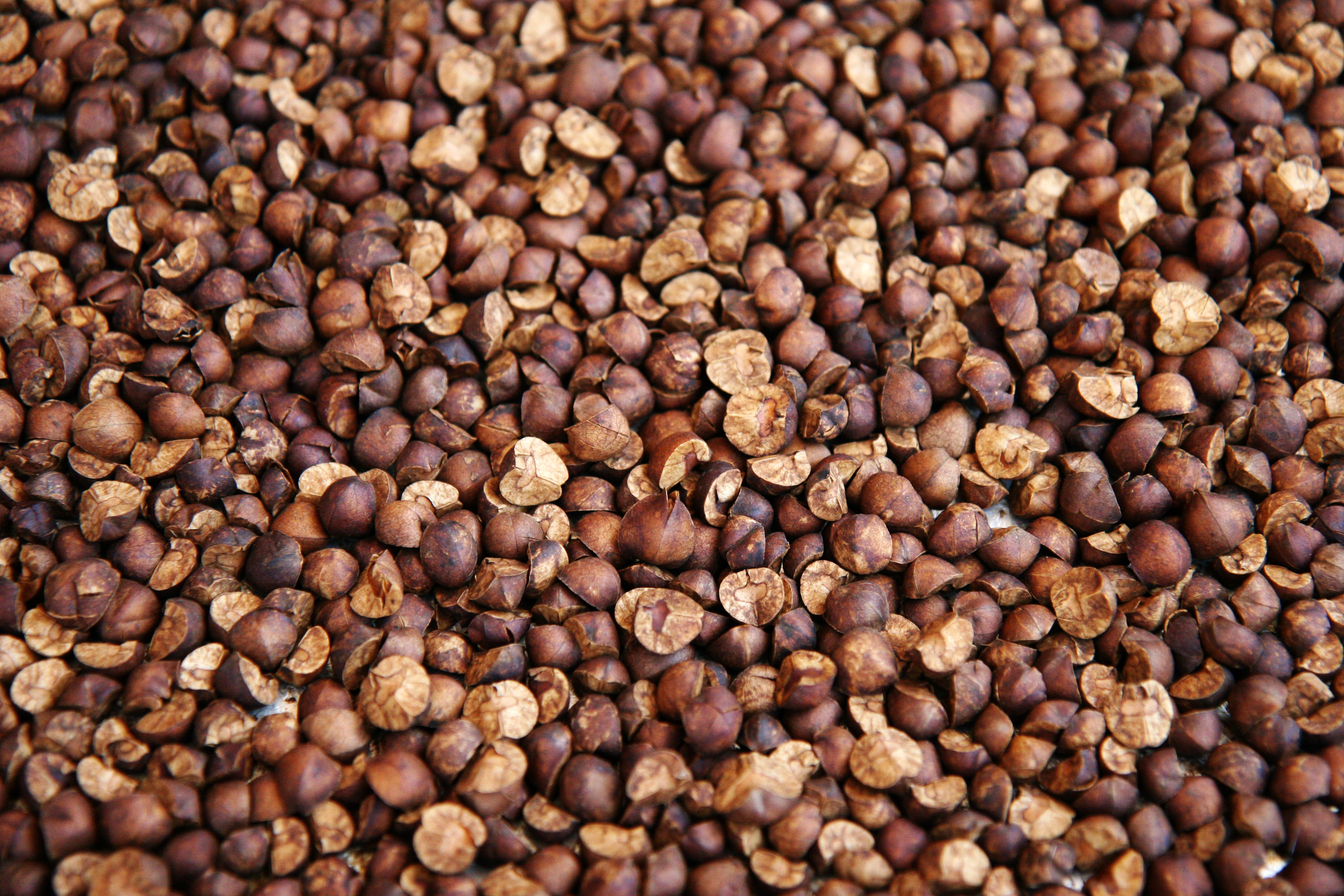Mexican jumping beans on:
[Wikipedia]
[Google]
[Amazon]

 Mexican jumping beans (also known as ' in Spanish) are seed pods that have been inhabited by the larva of a small moth (''
Mexican jumping beans (also known as ' in Spanish) are seed pods that have been inhabited by the larva of a small moth (''


 Mexican jumping beans (also known as ' in Spanish) are seed pods that have been inhabited by the larva of a small moth (''
Mexican jumping beans (also known as ' in Spanish) are seed pods that have been inhabited by the larva of a small moth (''Cydia saltitans
''Cydia saltitans'' or jumping bean moth is a moth from Mexico that is most widely known as its larva, where it inhabits the carpels of seeds from several related shrubby trees, mainly '' Sebastiania pavoniana'' or '' Sapium biloculare'' ( syn ...
'') and are native to Mexico. The "bean" is usually tan to brown. They are from the shrub
A shrub (often also called a bush) is a small-to-medium-sized perennial woody plant. Unlike herbaceous plants, shrubs have persistent woody stems above the ground. Shrubs can be either deciduous or evergreen. They are distinguished from trees ...
''Sebastiania pavoniana
''Sebastiania pavoniana'' is a species of tree in the spurge family native to Mexico and northwest Costa Rica. It is the 'bean' part of the Mexican jumping bean, despite not being a legume like true beans. The 'jumping' is provided by the larv ...
'', often also referred to as "jumping bean". However, they are not related to actual bean
A bean is the seed of several plants in the family Fabaceae, which are used as vegetables for human or animal food. They can be cooked in many different ways, including boiling, frying, and baking, and are used in many traditional dishes th ...
s (legume
A legume () is a plant in the family Fabaceae (or Leguminosae), or the fruit or seed of such a plant. When used as a dry grain, the seed is also called a pulse. Legumes are grown agriculturally, primarily for human consumption, for livestock f ...
plants), but rather to spurges. The beans are considered non-toxic but are not generally eaten. In the spring, when the shrub is flowering, moths lay their eggs on the shrubās hanging seedpods. When the eggs hatch, tiny larvae bore into the immature green pods and begin to devour the seeds. The pods ripen, fall to the ground and separate into three smaller segments, and those segments are called Mexican jumping beans. As the tiny larvae inside curl up and uncurl, they hit the capsuleās wall with their heads ā and the bean jumps. Itās been observed that they move more as temperatures rise, the larva eats away the inside of the bean (until it becomes hollow) and attaches itself to the inside of the bean with silk-like thread. The larva may live for months inside the bean with varying periods of dormancy. If the larva has adequate conditions of moisture and temperature, it will live long enough to go into a pupal stage. In the spring, the moth forces itself out of the bean through a round "trap door", leaving behind the pupal casing. After its metamorphosis
Metamorphosis is a biological process by which an animal physically develops including birth or hatching, involving a conspicuous and relatively abrupt change in the animal's body structure through cell growth and differentiation. Some inse ...
, the small, silver and gray-colored moth lives for no more than a few days.
As a novelty
When the bean is warmed (by being held in the palm of the hand, for example) the larva will move to eat, pulling on the threads and causing the characteristic hop. Leaving the beans in a heated environment such as direct sunlight can kill the larva. The beans can be energetic and make quite sharp movements from the moth larva inside several times a minute when especially active. When shaken near one's ear, a slight rattle can be heard. When it makes a softer rattle, this typically means that the larva has either died or entered the pupal stage.
Care and storage
Beans should be stored in a cool, dry place. Beans require periodic rehydration, mimicking the monsoon weather of their native Mexico. To rehydrate the beans, they need to be soaked, but not submerged, for about three hours in chlorine-free water once or twice a month.Sources
The Mexican jumping bean comes from the mountains in the states ofSonora
Sonora (), officially Estado Libre y Soberano de Sonora ( en, Free and Sovereign State of Sonora), is one of the 31 states which, along with Mexico City, comprise the Administrative divisions of Mexico, Federal Entities of Mexico. The state is d ...
, Sinaloa
Sinaloa (), officially the Estado Libre y Soberano de Sinaloa ( en, Free and Sovereign State of Sinaloa), is one of the 31 states which, along with Mexico City, comprise the Administrative divisions of Mexico, Federal Entities of Mexico. It is d ...
, and Chihuahua Chihuahua may refer to:
Places
*Chihuahua (state), a Mexican state
**Chihuahua (dog), a breed of dog named after the state
**Chihuahua cheese, a type of cheese originating in the state
**Chihuahua City, the capital city of the state
**Chihuahua Mun ...
. Ćlamos, Sonora, calls itself the "Jumping Bean Capital of the World". They can be found in an area approximately 30 by 100 miles where the ''Sebastiania pavoniana
''Sebastiania pavoniana'' is a species of tree in the spurge family native to Mexico and northwest Costa Rica. It is the 'bean' part of the Mexican jumping bean, despite not being a legume like true beans. The 'jumping' is provided by the larv ...
'' host tree grows. During the spring, moths emerge from last year's beans and deposit their eggs on the flower of the host tree.
See also
* '' Spirostachys africana'', a related plant parasitized by a similar moth * ''Emporia melanobasis
''Emporia melanobasis'' is a species of snout moth in the genus '' Emporia''. It was described by Boris Balinsky in 1991, and is known from South Africa.
Jumping beans
The larvae pupate inside fruit of ''Spirostachys africana''. Larvae develop ...
'', the moth parasite of ''Spirostachys africana''
* '' Sea-Monkeys''
* Formicarium
* ''Mighty Beanz
Mighty Beanz is a collectable children's toy line of plastic beans created by Moose Enterprises in Melbourne, Australia. The primary Mighty Beanz game is to race the beanz down different types of battle stages.
History
Original line
The Migh ...
'', a plastic toy line in which the toys resemble Mexican jumping beans
References
{{DEFAULTSORT:Mexican Jumping Bean Grapholitini Articles containing video clips Running gags Novelty items Mexican culture Hippomaneae